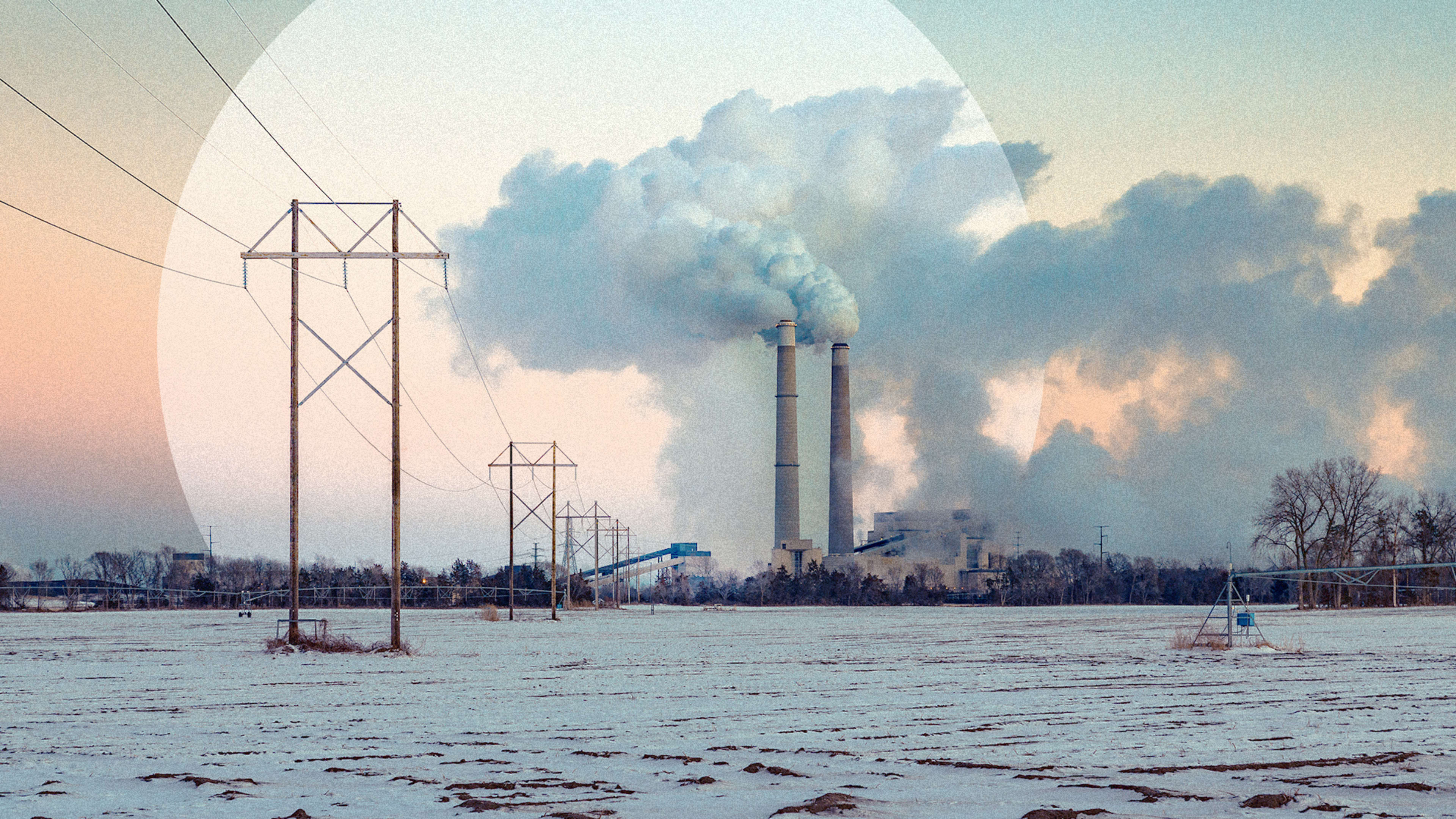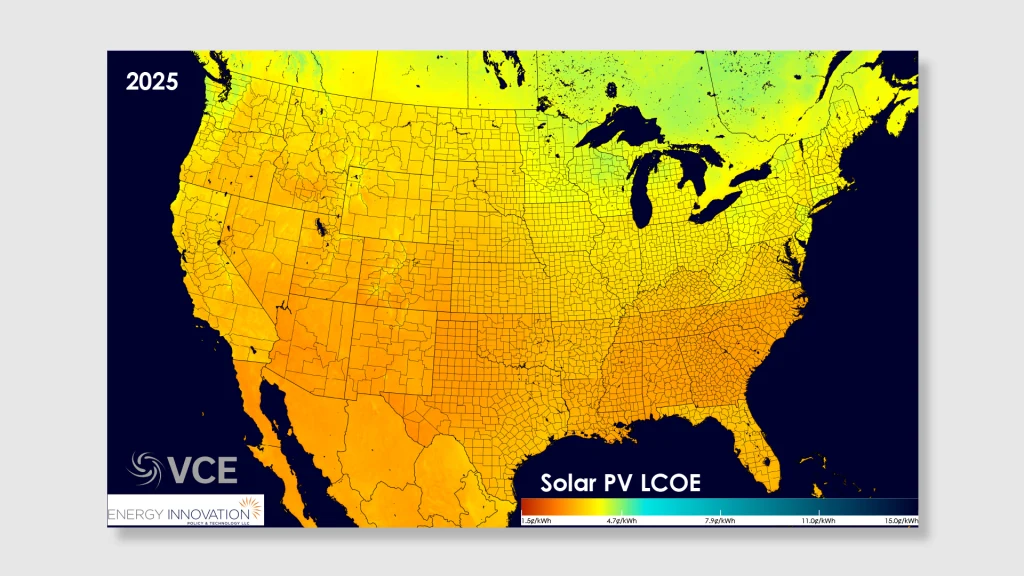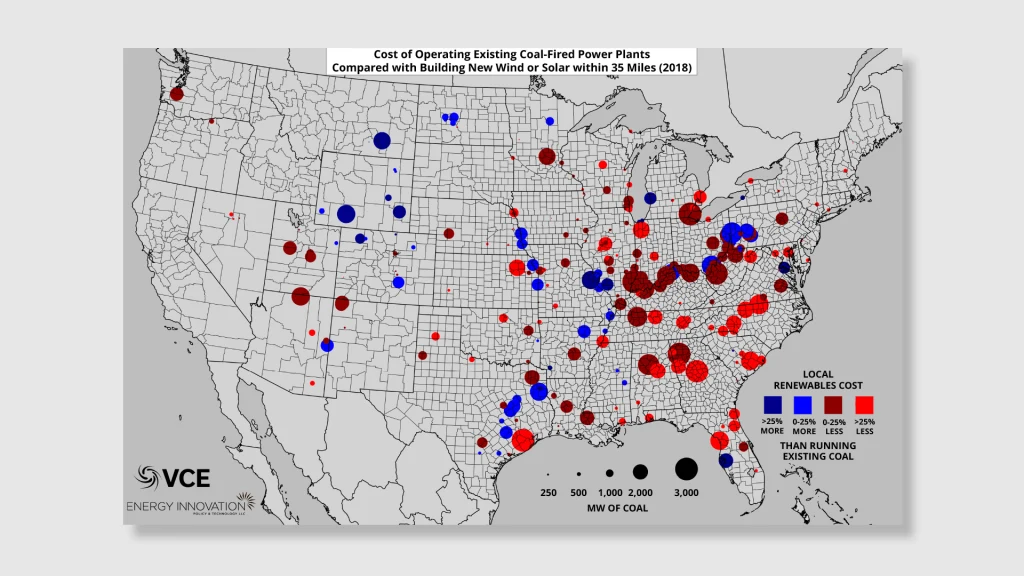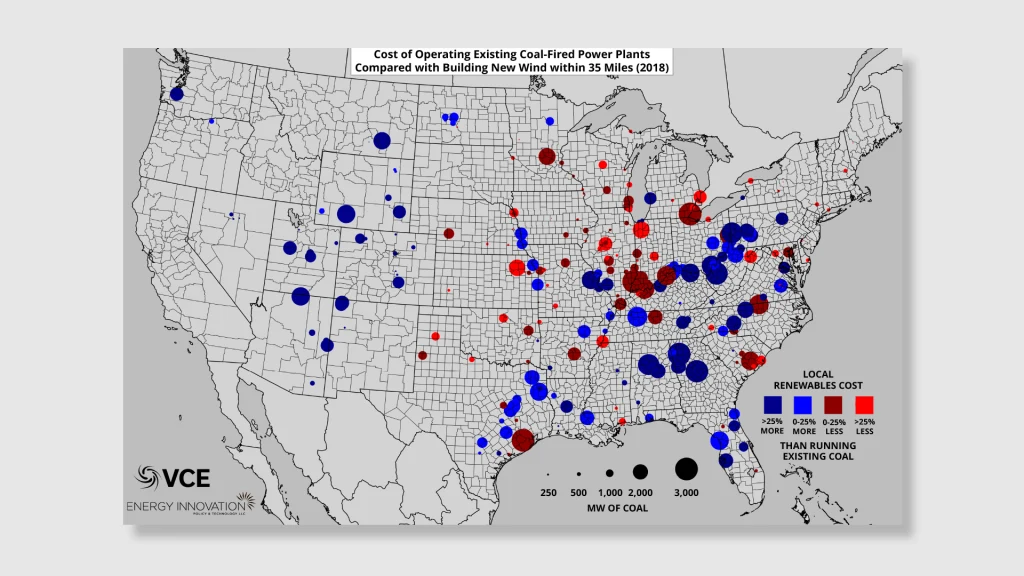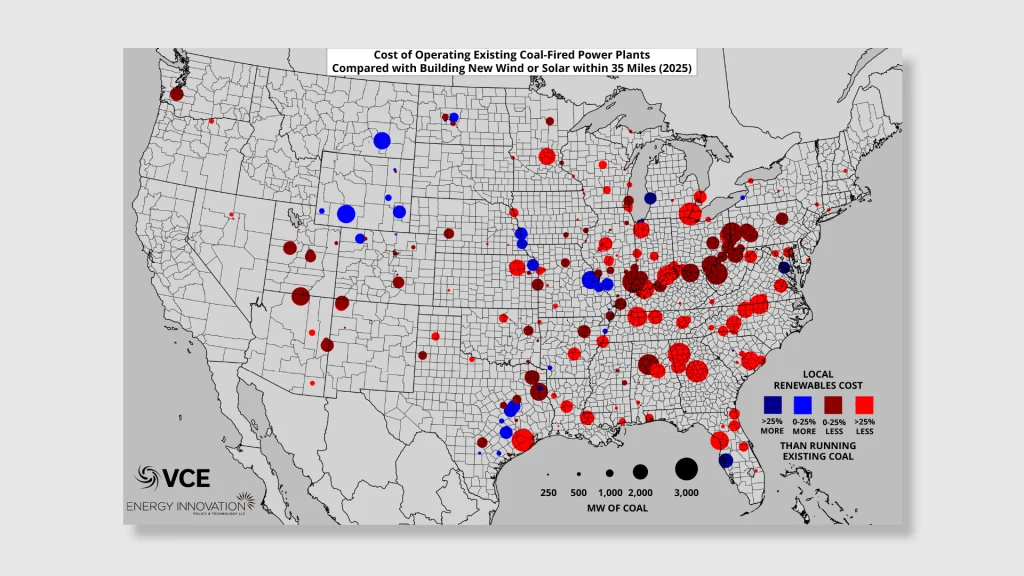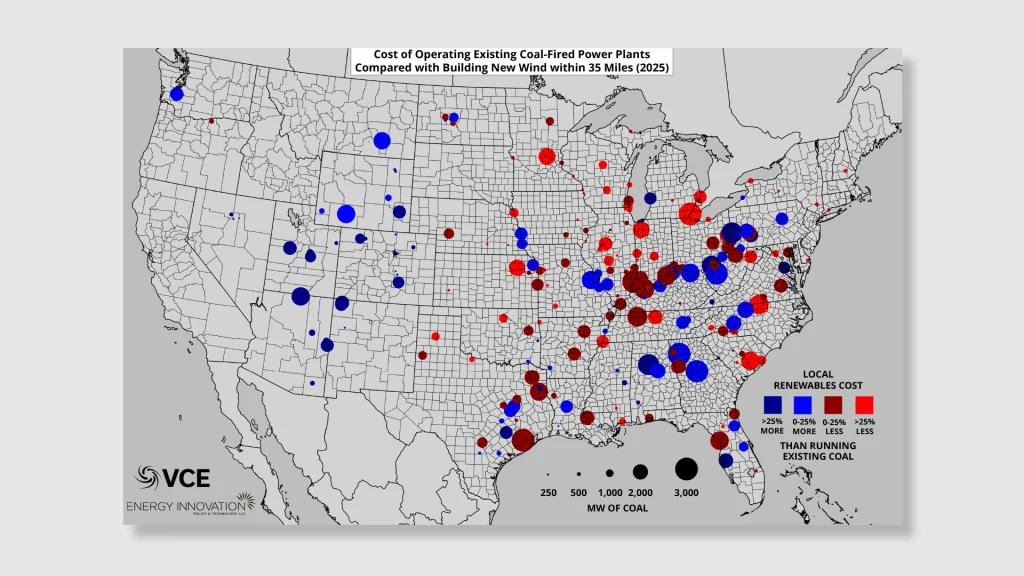As wind and solar power keep getting cheaper, coal power–which was the cheapest source of electricity for decades–is no longer economical in much of the U.S. A new analysis looked at every coal plant in the country and compared the cost of running those plants to the cost of operating a new wind or solar plant. As of 2018, 74% of existing coal plants cost more to operate than new local wind or solar.
“Our hypothesis was that if we can analyze all the coal plants, with a robust data set of wind and solar data, and cross-reference the two, that we would see coal being significantly at risk for losing on cost to wind and solar,” says Mike O’Boyle, director of electricity policy for Energy Innovation, the environmental research firm that did the analysis along with Vibrant Clean Energy, a company that has detailed data about exactly how much wind or solar is in a given location.
By 2025, even as federal renewable energy tax credits are ending, the report found that the number of “at risk” coal plants will grow to 86%. A portion of the coal plants–a third right now, and nearly half by 2025–are classified as “significantly at risk,” meaning they cost at least 25% more to operate than new renewables. (Those costs don’t even include the externalities of operating coal plants, such as the cost of climate change or the healthcare costs of air pollution from smokestacks. Emissions from power plants kill tens of thousands of Americans a year.)
The analysis only looks at the potential for local renewable power, in part because that’s a way to help replace local jobs that are lost when coal plants close. But some additional coal plants could be economical to replace with wind or solar farms that are farther away. In Colorado, for example, the utility plans to replace coal plants with wind and solar at strategic locations.
The researchers didn’t look at the cost of storage for wind and solar power when wind and sun aren’t available. But the cost of storage is also dropping dramatically. Some new technology–like a system that stores energy via gravity–is inexpensive enough that even when a utility does a full analysis including storage, they’d likely conclude that they could immediately cut total costs by shifting to renewables.
All of this explains why coal plants keep closing, though the process would move faster if utilities were regulated differently. Many utilities that own coal plants exist as monopolies, and regulators allow them to recoup construction and ongoing operation costs from consumers–so the utilities have little incentive to save money themselves. In areas where coal plants operate in competitive markets, they’re much more likely to shut down based on economics alone; others operate at a loss, hoping that the market for coal power will improve. “One of the main issues is just cultural–large, conservative institutions that are slow to change,” says Eric Gimon, a consultant with Energy Innovation. “But we’re starting to see the ice melt.” The report helps make the case clearer for the change–and for changes in policy that would help remove some of the structural barriers that are keeping some coal power in place.
Recognize your brand’s excellence by applying to this year’s Brands That Matter Awards before the early-rate deadline, May 3.
